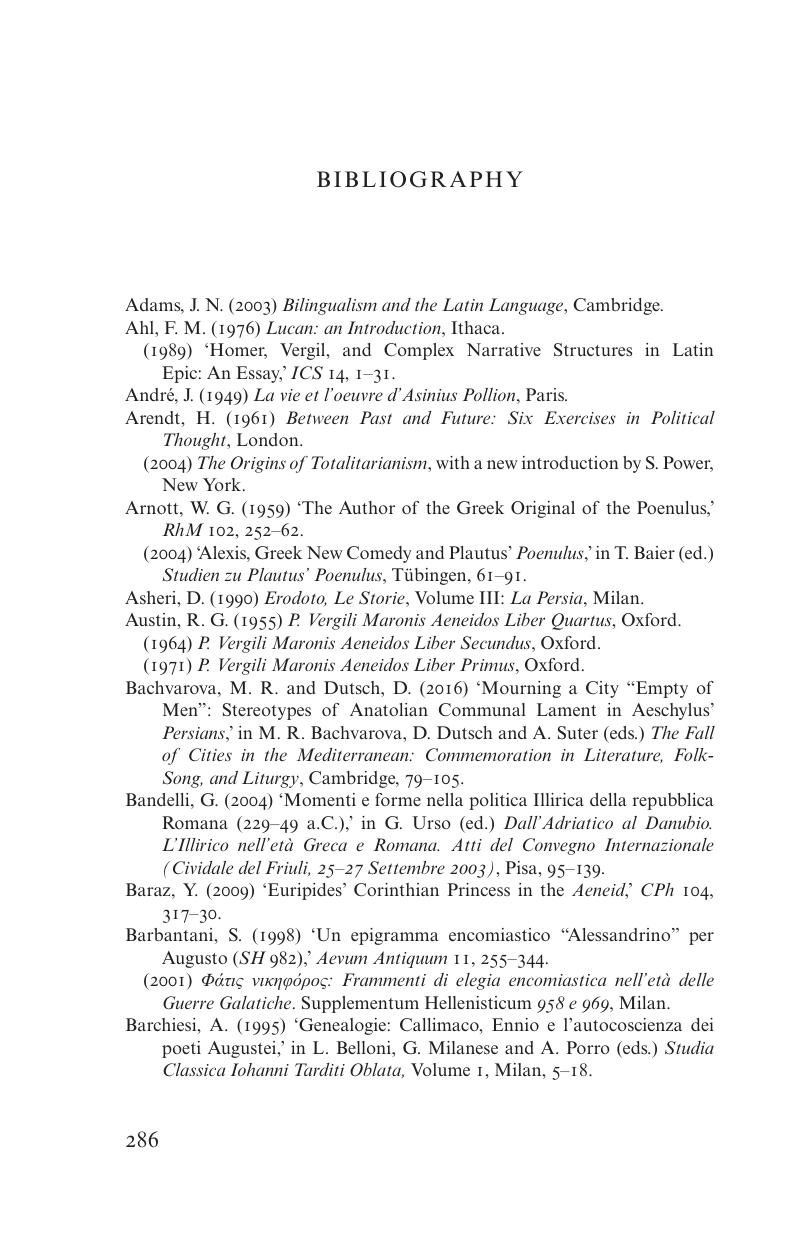Book contents
- Carthage in Virgil’s Aeneid
- Cambridge Classical Studies
- Carthage in Virgil’s Aeneid
- Copyright page
- Dedication
- Epigraph
- Contents
- Acknowledgements
- Abbreviations, Editions and Translations
- Introduction: Tractatio, Re-tractatio, Revisionist History
- Chapter 1 Carthaginian Constructions, since the Middle Republic
- Chapter 2 Polarity and Analogy in Virgil’s Carthage
- Chapter 3 Virgil’s Revisionist Epic and Livy’s Revisionist History
- Chapter 4 Virgil’s Punic/Civil Wars as Unspeakable
- Conclusion: All the Perfumes of Arabia
- Bibliography
- General Index
- Index Locorum
- References
Bibliography
Published online by Cambridge University Press: 16 March 2018
- Carthage in Virgil’s Aeneid
- Cambridge Classical Studies
- Carthage in Virgil’s Aeneid
- Copyright page
- Dedication
- Epigraph
- Contents
- Acknowledgements
- Abbreviations, Editions and Translations
- Introduction: Tractatio, Re-tractatio, Revisionist History
- Chapter 1 Carthaginian Constructions, since the Middle Republic
- Chapter 2 Polarity and Analogy in Virgil’s Carthage
- Chapter 3 Virgil’s Revisionist Epic and Livy’s Revisionist History
- Chapter 4 Virgil’s Punic/Civil Wars as Unspeakable
- Conclusion: All the Perfumes of Arabia
- Bibliography
- General Index
- Index Locorum
- References
Summary

- Type
- Chapter
- Information
- Carthage in Virgil's AeneidStaging the Enemy under Augustus, pp. 286 - 311Publisher: Cambridge University PressPrint publication year: 2018



